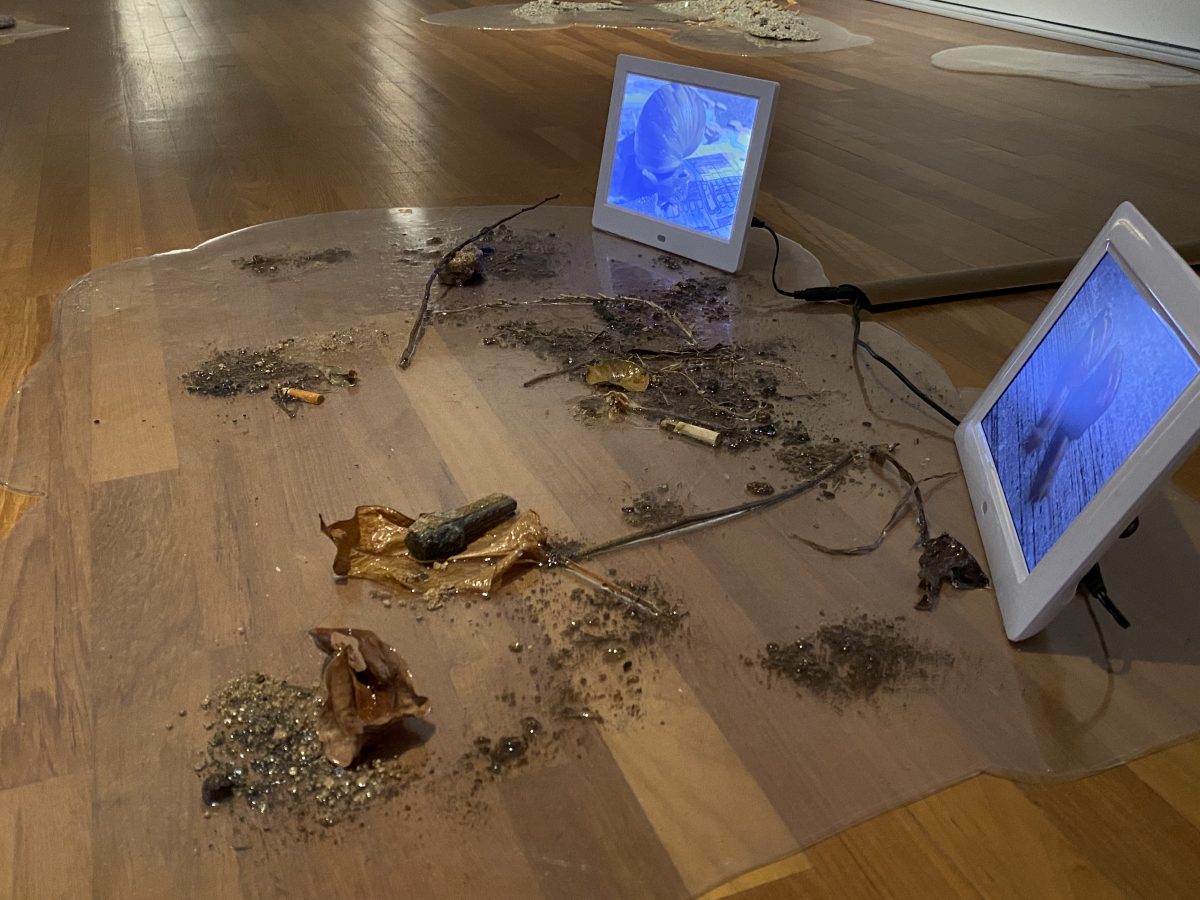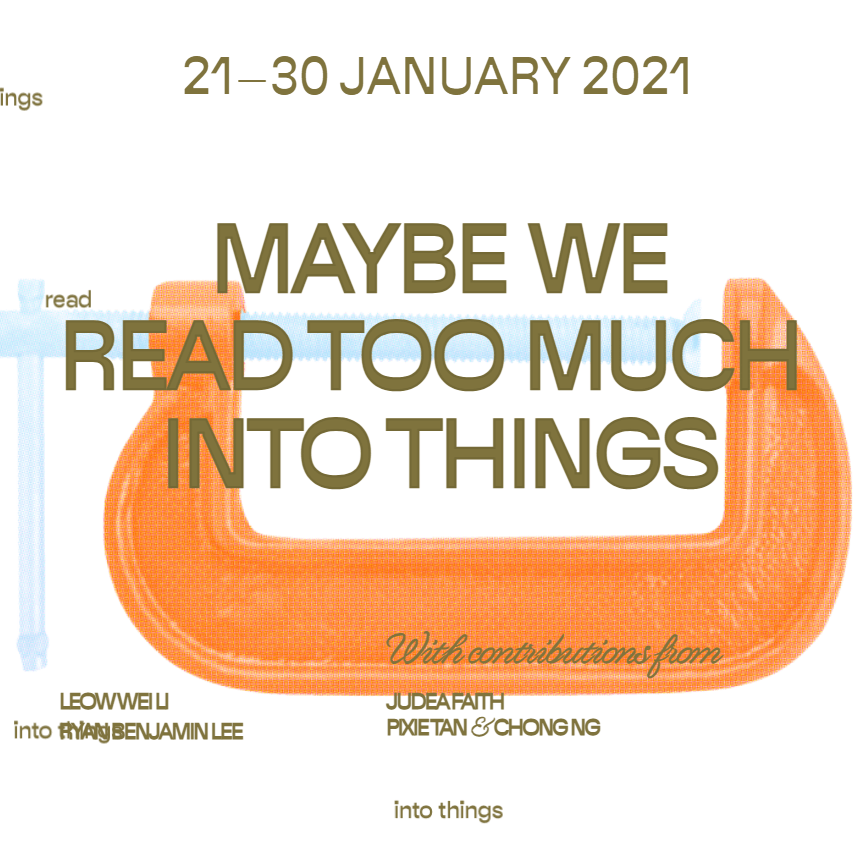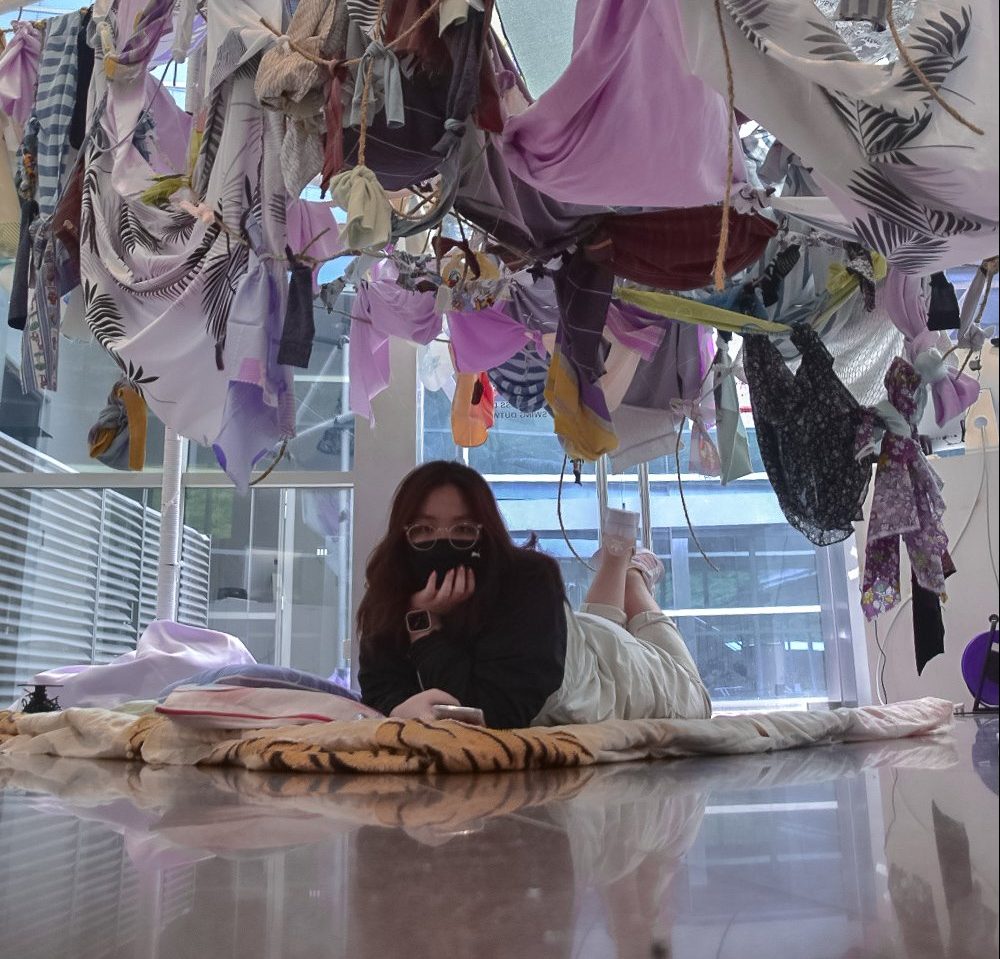The work i have chosen to analyse is Passage Moist Beings by Yeyoon Avis Ann in the Time Passes exhibition. On the surface, Passage Moist Beings focuses on the appreciation of protecting snails and the artist’s actions of helping snails cross paths to prevent them from getting crushed by passerbys. The work consists of a setup of a rainy and wet pavement with dirt and branches, where the puddles were pre-made with silicone. Some of the puddles consisted of screens which showed the videos of the artist shifting the snails away from the path and onto plants. The whole setup was small and simple, and may look unassuming at first, but contains many concepts that tie in with the exhibition and even in daily life.
The artist only started doing this during the beginning of the pandemic, where people were under lockdown, and the only things open were food stalls and supermarkets. She would encounter many snails on her walk to get groceries, and then she started to pick them up and move them away. She would video her encounters and post them on social media. Her friends who saw the video then proceeded to do the same action as well. This was the closest she got to contact with another living being at that time, thus inspiring her to create this work.
This artwork does talk about the niceness of shifting and protecting snails from getting accidentally killed, but on a deeper note, she realises the concept of a small action becoming a lifelong commitment, or the impact of a small action that benefits others in the long run. She uses her care for the snails as an analogy of people caring for others that are not related to them, or just even extending out our personal boundaries of care to others. In a way it highlights that we humans aren’t the only beings that are occupying this world, but are surrounded by an ecosystem that depends on each other. The emergence of a pandemic and lack of human to human contact starts to highlight the prominence of other living beings that we have co-existed with in this world.
In that sense, how can we care for the same environment as other non-human beings? How can we extend our care to non-human beings that do not give us any gain?
Looking at the concept of home, small beings such as snails carry their entire being and house around, and being crushed and killed leaves nothing behind. This also showcases the state of a home for different people and how some people have more stable homes and some more deranged ones.
Some food for thought: How do we gear care towards people with different home settings?
About the artist
Yeyoon Avis Ann is a motion graphic designer and artist, who works prolifically across installations, sound, and video. Avis’ interests include artistic methodologies, computer thinking and modes of production. In her practice, Avis strives towards what she describes as “breeziness” – she simply works with whichever material that encapsulates these ideas best. She quotes: “I think of randomness as being breezy, and I enjoy those interconnections between seemingly unrelated things. What I find the most compelling is the way in which artists or theoretical writers act in order to draw these connections in their works.” – which can be seen through Passage Moist Beings.
Final Thoughts about the work
I think it was an interesting and unique idea to incorporate the concept of the plight of snails to relationships and care between human beings. It did come to me as a very random thought and something that i would never think of as an artist, but through this work, i realised that our universe is more interconnected than we ever thought it was.
Final thoughts about the exhibition
Overall the exhibition was pretty interesting and easy to grasp from the descriptions. The artists chose very interesting topics to correlate to the theme – Time Passes, and the medium of these works were unique as well.


































